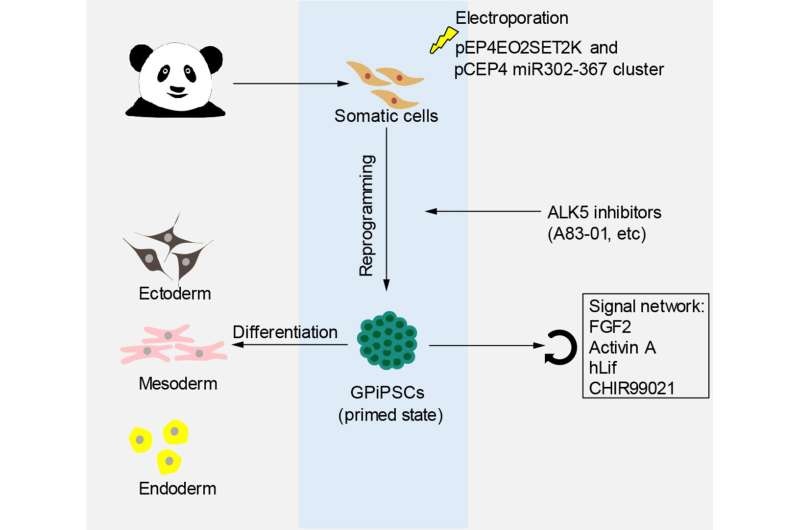Chinese biologists managed to create models of human beings by transforming stem cells from the skin of giant pandas — a key factor for their survival.

Turning Skin to Stem
Researchers in China have succeeded in converting cells from the skin of a giant panda into stem cells, according to a study. It means they have reprogrammed fibroblast cells from the pandas’ skin into stem cells, which can grow to become just about any cell in the body.
It’s a huge boon to the conservation of giant pandas, an endangered species widely considered emblematic of wildlife preservation efforts. The creation of these iPS cells has begun to allow the scientists to develop primordial germ cells, which could be able to give rise to egg and sperm cells. It has the potential to help prevent the giant panda from becoming extinct.
A Race Against Time
It has been a long and winding road to create these panda iPS cells. For years, stem cell biologists have been working at perfecting the conversion of fibroblasts into iPSCs as part of their research in regenerative medicine. But they have also discovered that the process is unique to individual species, so any new type of animal will demand a fresh methodology to prep its cells for iPSC creation.
The research team in China here, for their part began last year to work towards generating panda iPSCs capable of producing male and female reproductive cells. Captive Breeding will Help Save Giant Panda from Habitat Loss and Fragmentation | Evolution: Education and Outreach
The team first brought the right transcription factors to these panda fibroblasts, and a particular microRNA cluster together to coax them into become iPSCs. They have since honed their technique to improve efficiency and are testing the iPSCs they derive to see if they can divide and give rise first to germ layers — a trio of initial tissue layers that all cells eventually develop from — as a precursor step for generating sperm- or egg-like cell types.
Conclusion
This implies a major advance in the conservation of this vulnerable species: iPSCs generation from giant panda. Study lead author Kefei Chen said the technique offers new opportunities for conservation, since these stem cells can be turned into reproduction cells and help increase giant panda reproduction. It is this type of out side of the box thinking, that shows us what reaserch and conservation can do even when the task at hand may seem desperate.
